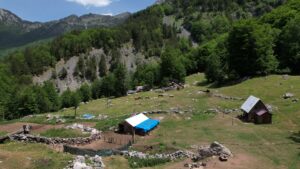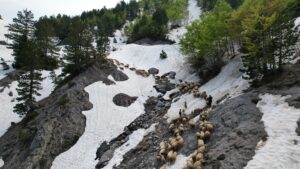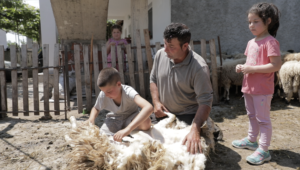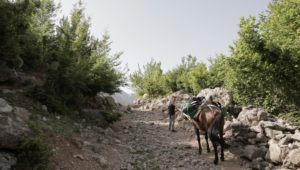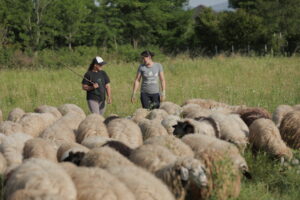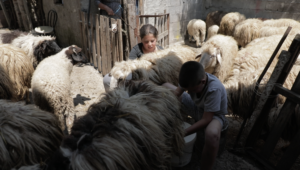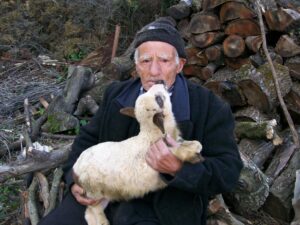Transhumance is a form of pastoralism and a work practice that involves the seasonal movement of herders, their families, livestock (mainly goats and sheep), domestic animals (dogs, horses, and mules), and supplies along established migratory routes, otherwise called droves or tracks (shtigje). They may range from tens to hundreds of kilometers, and lead to geographical and climatic areas that provide more nutritious grazing conditions. Families use established settlements at those pastures, referred to as “stan”, which they maintain year in, year out. In Albania, the element can be grouped into two broad types: upward or vertical transhumance whereby the bearers drive their herds from Mediterranean landscapes towards mountainous areas in May or June for better pastures, and vice-versa; and, horizontal transhumance, whereby the herds are moved across lowland or hilly areas covering long distances from summer to winter pastures, and vice-versa. Transhumance encompasses a vast system of knowledge and practices relating to: grazing practices; animal care and husbandry; the natural environment (soil, pastures, plant species, weather, and biodiversity); along with kinship and community bonds reinforced by the close-knit working relations the element requires); as well as the making of by-products such as milk, cheese, butter, ricotta-like cheeses (djathe mshere and currek), and leather goods, meat and wool. Low-impact droving and grazing practices also contribute to sustainable land management and biodiversity through, for example, the enrichment of soil via manure, the removal of fire-fuelling brushwood through grazing, and the lighter usage of water and plant sources in a given area due to the continued movement of livestock. Intergenerationally transmitted for centuries in Albania, this element is largely practiced by family groups, including extended families and shepherds engaged in seasonal work that form the communities. Living mainly in rural village settings, the bearers include men, women, and children, working together with specific and shared tasks and whose livelihoods depend almost exclusively on the by-products of their herds. Humans, animals, and the natural environment have a fusional relationship through transhumance, which also encompasses oral traditions relating to animal calls when herding, along with social practices and celebrations. The latter includes the Pan Festival (Pan being the patron deity of shepherds) in Nivica in June, during which herders bring together their goats in a competitive context, seeking better breeds before migration towards the alpine pastures begins. Another celebration is the Te Dunmet which takes place around the end of September in Kukes, to mark the return of the herds from summer pastures to family farms on the lower lands.
- Home
- •
- Gjirokastra Region
- •
- Albanian Transhumance
Albanian Transhumance
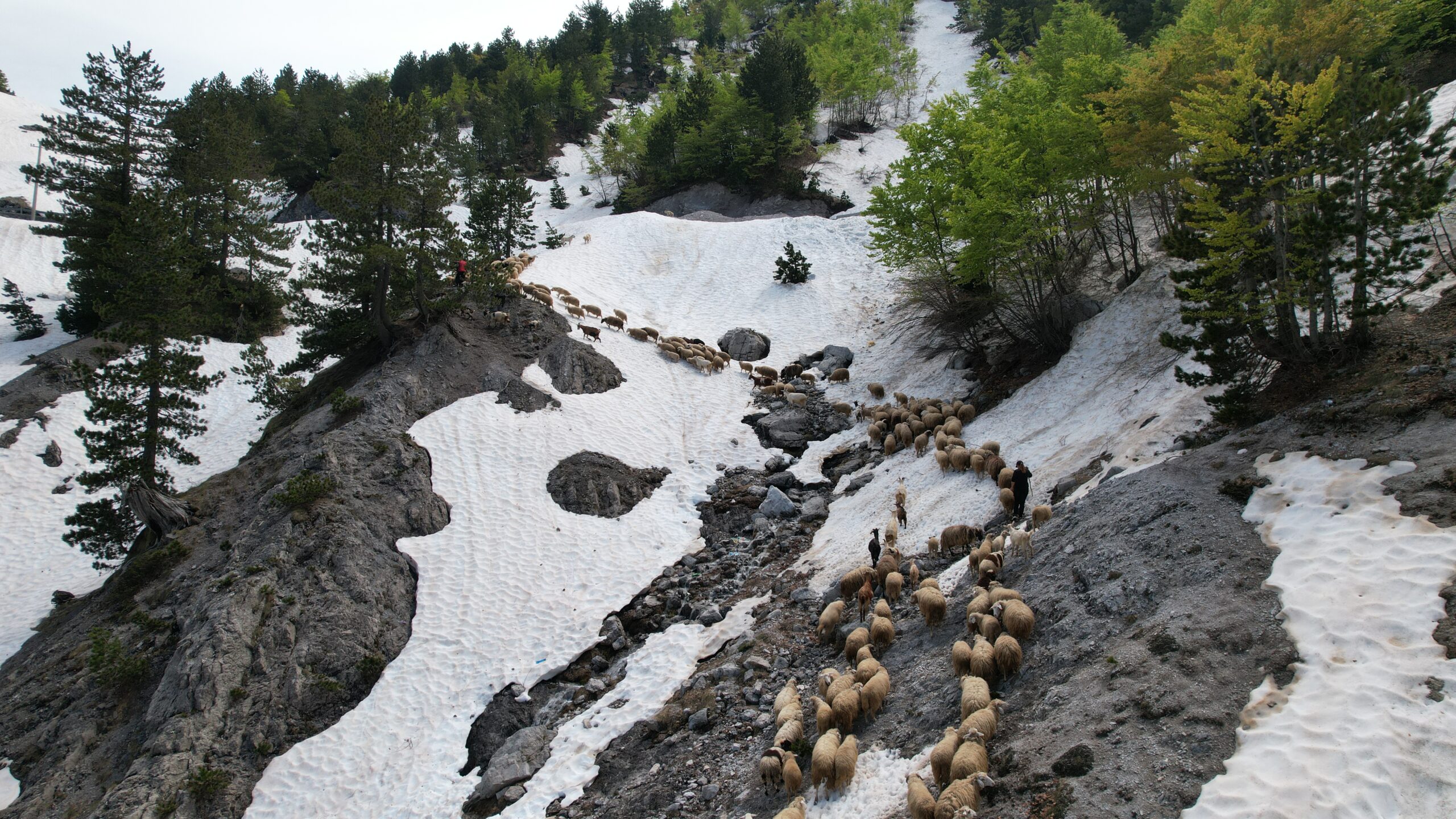
- Home
- •
- Gjirokastra Region
- •
- Albanian Transhumance
Albanian Transhumance

